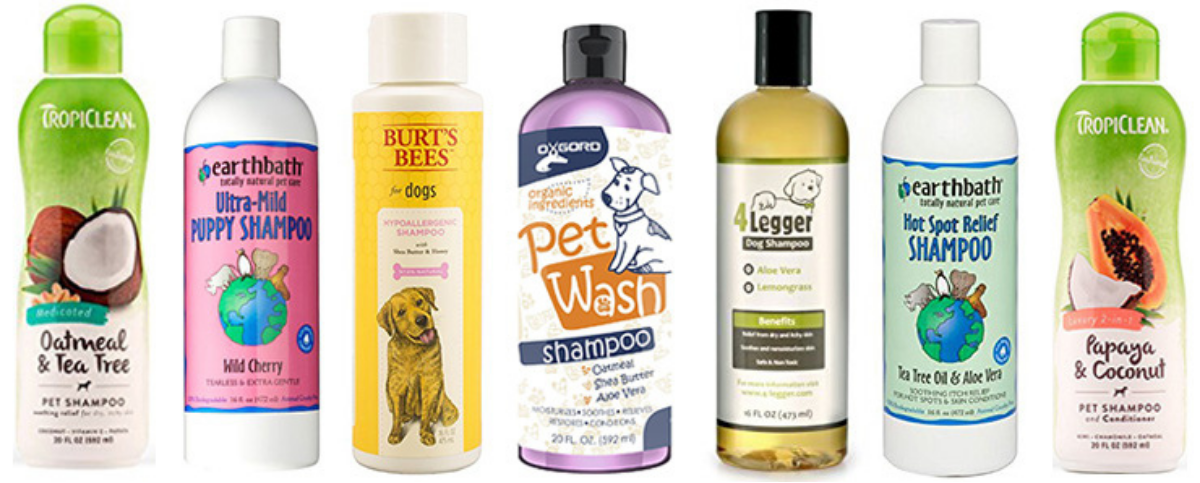Bathing
Bath-time! Any dog owner will eventually have to give their dog a bath. Below is information on the basic supplies and equipment used in bathing.
Shampoos/Conditioners
Different coat types require different products, use your best judgement when choosing what will work best for your dog.
Avoid human products as they contain chemicals not suited for dogs.
Hypo-allergenic shampoos for dogs with allergies
Oatmeal shampoos for dogs with allergies, dry, or sensitive skin
Flea/tick shampoos to treat infestations
Medicated shampoos for a variety of medical purposes from allergies to infections
Conditioners can be used to help put oils back into dry skin, and detangle long hair types.
Sprays/wipes for between baths or on-the-go
Bath Brush
Bath brushes are designed to work shampoo into thick coats during a bath
Other tips for bathing:
Brush your dog and remove any matting before their bath
Try spreading some peanut butter 🥜 on the wall to associate positivity with baths, and don’t forget to praise throughout the whole bath process
Only use a hair dryer if your dog is comfortable with both baths and loud noises. Always use the air-dry setting as standard heat settings are too hot for their skin.
Step By Step
Introducing a puppy to taking baths
The average puppy can be cleaned with a wet washcloth or towel. In fact, the American Kennel Club recommends using a washcloth on puppies up to six months old. However, puppies are adventurous and can get dirty pretty quickly, so you can start giving your puppy a bath as early as 8 weeks old. Always consult your veterinarian if you have any questions or concerns about what age to start with your puppy.
-
Make sure your puppy has been out to potty, is fed, and not tired.
Expose your puppy to the elements of a bath. Place the puppy in the empty tub and praise/reward with treats. Run the bath water while the puppy is in the bathroom(but not the bathtub) to get him/her used to the noise.
Before a bath, brush out any tangles or matts in their coat.
Fill the tub with an inch or two of water and place your puppy in the water.
Watch your puppy’s reactions at each step. If he/she seems relaxed, confident, curious, then you are ready to wash your puppy. If at any point your puppy looks stressed or anxious, slow down or go back a step and repeat the exercises with high value rewards until the puppy is comfortable.
-
Use lukewarm water. Puppies and dogs are sensitive to heat and do not need or like the hot showers that humans enjoy.
Hold off on the shampoos and conditioners until the puppy is at LEAST 3 months(12 weeks) old, the chemicals can irritate their skin.
Pile on the praise and affection. Excitement and cuddles can make bath time a fun, positive experience. Use toys or treats as additional rewards.
Keep clear of the eyes and ears. Use a wet washcloth to clean these areas. Getting an ear or eyeful of water can make them hesitant for the next bath.
-
Give praise and/or treats. 🏅
Dry off your puppy with a towel.
If you plan to eventually use a dryer for your puppy, make sure your puppy is comfortable with the bath before introducing the dryer. Slowly introduce the noise and feel of the dryer separately. Remember to use a non-heat setting to prevent injury.



